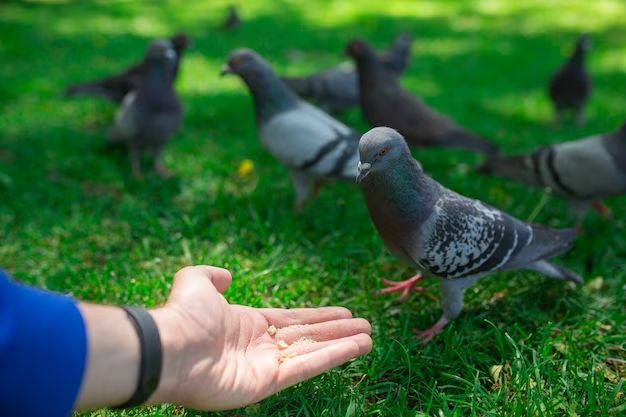Birds can be a nuisance when they congregate around homes and properties, leaving behind droppings, feathers, and making loud noises. Many homeowners seek solutions to keep birds away from areas where they are not wanted. There are several effective options to deter birds humanely without harming them.
Page Contents
Bird Repellent Methods
There are many different bird repellent products and devices available to discourage birds from becoming a problem in an area. The most common and effective options include:
- Bird scare tape – Reflective metallic streamers that move in the wind and startle birds with the flashes of light and sound.
- Bird spikes – Porcupine wire spikes that prevent birds from being able to roost or perch on ledges and surfaces.
- Bird netting – Durable plastic mesh that excludes birds physically from covered areas.
- Sonic bird repellers – Devices that emit high frequency sounds, inaudible to humans, which deter birds from the area.
- Predator decoys – Lifelike model hawks, owls, snakes that frighten birds away.
- Repellent gels – Clear, sticky gels that make surfaces uncomfortable for birds to land on.
Using one or more of these deterrents can be an effective strategy to prevent bird problems. However, professional installation is recommended for permanent solutions like bird spikes and netting that require mounting hardware and precise placement.
Natural Bird Repellents
For those looking to avoid using commercial products, there are some natural options to repel birds including:
- Planting shrubs with thorns – Hollies, roses, pyracantha.
- Allowing natural predators access – Hawks, owls, snakes.
- Using strong smells – Garlic, cinnamon, curry powder, citrus oils.
- Installing wind chimes.
- Using exterior motion-activated sprinklers.
- Applying ammonia-soaked rags near roosting areas.
The downside is these methods require more ongoing effort since birds can become acclimated. But they can be part of an integrated pest management plan to repel birds without artificial products when used diligently.
Key Considerations
When selecting a bird deterrent, there are some key factors to consider:
- Bird species – Solutions that work for pigeons may not be as effective for smaller birds like sparrows or swallows. Identify the type of bird first.
- Coverage area – Calculate the square footage needing protection to choose a method that can cover the space sufficiently.
- Entry points – Block actual access holes and landing spots; otherwise birds will just find another spot.
- Timing – Take action before birds have established nests and feeding patterns in an area.
- Rules – Ensure repellent methods conform to laws protecting certain bird species.
- Other animals – Avoid methods that could inadvertently harm beneficial wildlife in the area.
Taking these factors into account will lead to the best results when implementing an exclusion plan to discourage nuisance birds.
Top Rated Solutions
Based on effectiveness, safety, and reviews, below are the top-rated bird deterrent products and natural remedies:
Mechanical Repellents
| Product | Description |
|---|---|
| Bird-X Stainless Steel Bird Spikes | Durable spikes made of rust-proof stainless steel. Humane and low maintenance. |
| Nixalite Premium Bird Netting | Long-lasting UV stabilized polyethylene netting for heavy duty exclusion. |
| Bird-X Sonic Bird Repeller | Emits varied ultrasonic frequencies to repel multiple bird varieties. |
Natural Deterrents
| Method | Tips for Effectiveness |
|---|---|
| Predator decoys | Move decoy frequently to look real. Use various types for different predators. |
| Smell repellents | Reapply every 2-3 days. Combine different smells for robust effect. |
| Physical barriers | Must be tall/wide enough to block access. Use with other methods. |
Conclusion
Preventing birds from becoming a nuisance and causing property damage takes an integrated approach. The most successful bird exclusion plans use multiple techniques at the same time to reinforce deterrence. This includes blocking physical access, applying repellent smells/sounds/surfaces, and removing attractions like food sources. Implementing two or more highly-rated methods tailored to the specific situation, bird type, and area needing protection will yield the best results for keeping unwanted birds away humanely and effectively.
